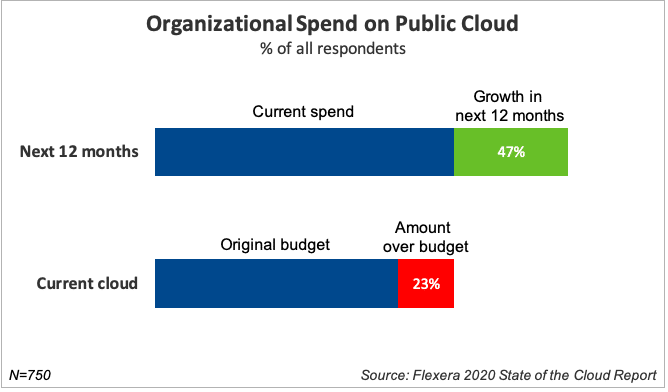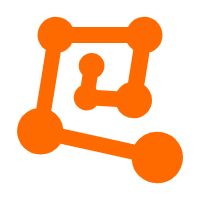By Raghav K.
The time has come for businesses to run their workloads using the most efficient and innovative environment. It is becoming increasingly important for organizations to adopt a multi-cloud strategy that can optimize performance, provide unique advantages over traditional practices, and allow for evolution-based growth.
According to Gartner, “By 2022, about 75% of enterprise customers using cloud infrastructure as a service (IaaS) will adopt a deliberate multi-cloud strategy, up from 49% in 2017.”
A multi cloud environment provides an extremely flexible approach. The advantages of multi cloud are enough for organizations to look past any disadvantages. A multi cloud setup can be a big benefit, but businesses need a strong strategy and an IT team that can manage, implement, provide visibility into the multi cloud environment. You can adopt a multi-cloud strategy through proper management, governance, and ceasing opportunities.
According to a report by Flexera, Organizations are continuing to increase their cloud spending rapidly. In doing so, they struggle to forecast their fast-growing cloud costs accurately. Respondents reported their public cloud spending was over budget by an average of 23%.

2021 will define how the industry evolves after the COVID-19 pandemic. Some organizations will grow considerably, while some will struggle. Alibaba Cloud has made significant contributions towards re-building after the blow to the industry.
2021 has to be the year where smart solutions like machine learning and IoT define how industries work and progress in the new normal. Multi cloud setups can certainly facilitate massive computing power and innovative tools.
The Flexera 2020 State of the Cloud Report suggests the shift to a multi cloud environment is a dominant strategy that most enterprises are adopting. A mix of multiple public and private clouds is the most in-demand solution within a multi cloud setup. A public cloud and its functionality attracts the organizations most and is outlined as the prominent reason for its dramatic growth in all organizations.
“The COVID-19 pandemic caused industry-wide disruption. It has changed the way organizations define and conduct affairs, while the investment patterns and current resource optimization scenarios remain unchanged over the past four years.” – Report
"The widespread disruption caused by the COVID-19 pandemic has reinforced the critical importance of businesses being agile enough to scale up or down with fluctuations in demand," said IDC's Jyoti Lalchandani, Group Vice President and Regional Managing Director for the Middle East, Turkey, and Africa (META) – Source IDC
Organizations are moving to the cloud because of its scalability, elasticity, and availability. The outreach of organizations includes the zeal of optimizing this work-from-home setup to work for the organizations. In this particular strategy, implementing a solution based on a multi cloud setup can benefit organizations more than we can comprehend today.
IDC Expects 2021 to Be the Year of multi cloud as the COVID-19 Pandemic Reaffirms the Critical Need for Business Agility
You need to think about implementation and the strategy behind the distribution of services with different cloud providers to derive a future strategy with a multi cloud setup. It is imperative to go with everything as code. Utilizing the time you don't have by shallowing your resource pool with added maintenance and management operations (O&M) is something you would want to avoid.
Alibaba Cloud Infrastructure as Code (IAC) works with Terraform and can offer an abstract build in a multi-cloud setup, where most providers readily support tools like Jenkins, Ansible, Puppet, Docker, Chef, and (most importantly) Kubernetes. A combination of these tools can provide an ergonomic solution for application delivery, application integration, automation, testing, and containerization.
A dependable toolset is the highest requirement to manage a multi-cloud infrastructure. Most cloud providers go with open-source, standardized toolkit support that offers a unique subset to help enterprises build. Multi cloud will continue offering these tools throughout the next decade. Technology portability across multi-cloud is the best thing that multi-cloud offers.
According to the 2019 CNCF SURVEY, “Most organizations are using more than one Kubernetes cluster, are driven by the rise of private Kubernetes cluster adoption, recognize the need to use separate clusters between application and teams, and are separating between development and production environments.”
Multi cloud management is not only about provisioning resources from multiple sources. Organizations will have to work with a skilled team for centralized configuration management and policies to maintain a seamless work culture. multi cloud provides a big resource pool to help organizations build, but it does raise a question about the complexities of multi cloud management.
Alibaba Cloud and Microsoft created the Open Application Model (OAM) project under the Open Web Foundation.
OAM is a specification for describing applications so that the application description is separated from the details of how the application is deployed onto and managed by the infrastructure. – Alibaba Cloud
Combining the Open Application Model (OAM) with the multi cloud approach enables an organization to leverage a more standard and extensible framework to build with Kubernetes. As OAM specifies deployment and development, there is a subtle separation of application code and deployment infrastructure. The Kubernetes Resource Model can help developers extract more value out of their code and implement multiple scenarios for SDLC.
A hybrid cloud is a combination of multiple deployment environments, either public or private, based on a form of integration or resource sharing between them. On the contrary, multi cloud is a combination of multiple cloud vendors sharing either public or private cloud resources for better resource pooling and disaster recovery.
A hybrid cloud setup may work with a public cloud environment and a private cloud environment with managed infrastructure to provide the seamless combination of resource sharing and load-shifting. Although a hybrid cloud setup is extremely productive and secure, a multi-cloud approach offers another step into the hybridization spectacle for the IT industry.
multi cloud is growing substantially, and 2021 will be the year that defines how it will pan out throughout the next decade. It is a complex scenario today, but even in its infancy, multi-cloud environments can fulfill the demands of high-end distributed workloads, including Machine Learning for AI and IoT.
2021 will see more multi-Kubernetes clusters and teams working toward a simpler approach for management and automation of Kubernetes. Significant improvements are expected with multi-cloud and edge by involving everything as code terminology, Kubernetes, and cloud-native architecture.
2021 should show considerable improvements with automation tools and methods that enable a more centralized and specialized approach for multi-cloud setups.
Alibaba Cloud's Sixth-Generation ECS Instances Upgrade Details

2,593 posts | 790 followers
FollowAlibaba Clouder - January 26, 2021
Alibaba Clouder - January 4, 2021
Alibaba Clouder - February 9, 2021
Amuthan Nallathambi - May 12, 2024
Alibaba Clouder - December 31, 2020
Alibaba Cloud Community - September 16, 2021

2,593 posts | 790 followers
Follow Platform For AI
Platform For AI
A platform that provides enterprise-level data modeling services based on machine learning algorithms to quickly meet your needs for data-driven operations.
Learn More Epidemic Prediction Solution
Epidemic Prediction Solution
This technology can be used to predict the spread of COVID-19 and help decision makers evaluate the impact of various prevention and control measures on the development of the epidemic.
Learn More Hybrid Cloud Solution
Hybrid Cloud Solution
Highly reliable and secure deployment solutions for enterprises to fully experience the unique benefits of the hybrid cloud
Learn More Hybrid Cloud Storage
Hybrid Cloud Storage
A cost-effective, efficient and easy-to-manage hybrid cloud storage solution.
Learn MoreMore Posts by Alibaba Clouder